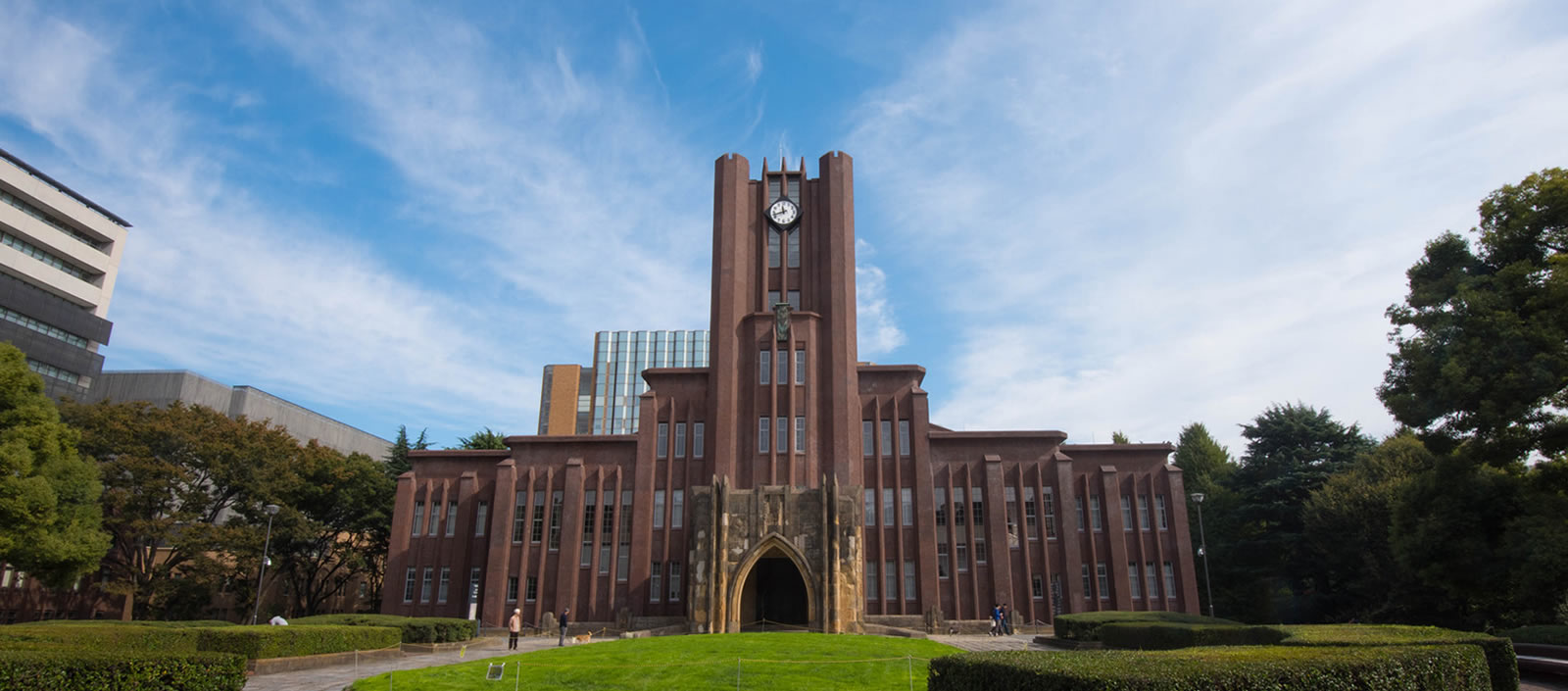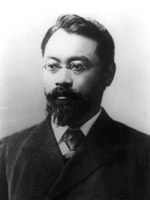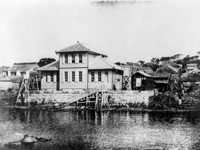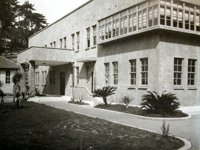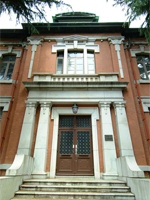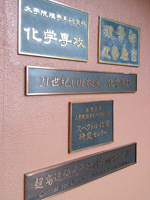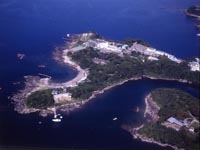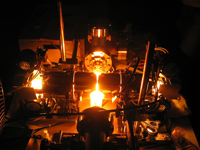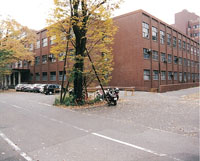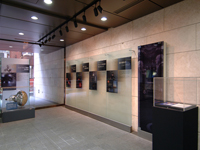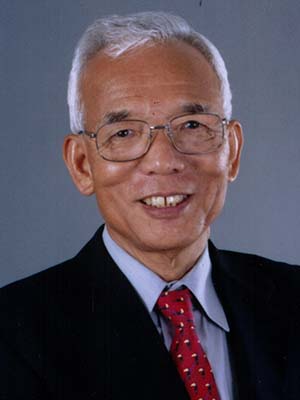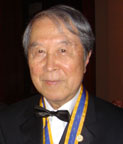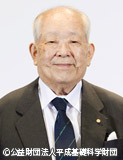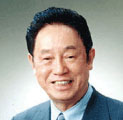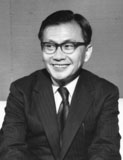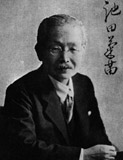History
1877The Faculty of Science originated from the Institute of Western Learning of the Tokugawa shogunate. The Tokyo-Kaisei School and the Tokyo-Igakko (Tokyo Medical School) were merged to form the University of Tokyo. The College of Science was established comprising eight departments: Mathematics, Physics, Chemistry (theoretical chemistry, applied chemistry), Biology (zoology, botany), Astrology, Engineering (mechanical engineering, civil engineering), Geology, and Metallurgy. The Koishikawa Botanical Garden became an affiliated facility of the College of Science, the University of Tokyo. 1886The name of the University of Tokyo changed to Teikoku Daigaku (Imperial University) in accordance with the Imperial Ordinance No. 3. The College of Science was comprised of seven departments: Mathematics, Astrology, Physics, Chemistry, Zoology, Botany, and Geology. The Misaki Marine Biological Station was established. 1897Teikoku Daigaku (Imperial University) was renamed to Tokyo Teikoku Daigaku (Tokyo Imperial University) in accordance with the Imperial Ordinance No. 208. The Misaki Marine Biological Station was moved to the Koajiro Castle site location. 1902The Nikko Botanical Garden was established. 1907The Department of Geology was divided into two Departments: Geology and Mineralogy. 1919The Imperial Ordinance No. 13 was issued under which the College of Science became the Faculty of Science; the Department of Geography was established; the Department of Astrology was renamed the Department of Astronomy; and the Departments of Theoretical Physics and Experimental Physics were merged to form the Department of Physics. 1923The Department of Seismology was established within the Faculty of Science. |
|
1939The Department of Anthropology was established. 1941The Department of Seismology was expanded to create a separate Department of Geophysics, bringing the total number of departments to 11. 1947The Faculty of Science was renamed to the Faculty of Science, the University of Tokyo. 1949The National School Establishment Act was promulgated, under which the Faculty of Science at the University of Tokyo was re-organized, comprising five departments: Mathematics, Physics, Chemistry, Biology, and Earth Sciences. 1958The Department of Biochemistry was established. The Geophysical Observatory was established. 1967As part of the expansion and reorganization of the Department of Physics, courses in Physics, Astronomy, and Geophysics became the Departments of Physics, Astronomy, and Geophysics, respectively. 1970The Information Science Laboratory was established. 1974The High Energy Physics Laboratory was established. 1975The Department of Information Science was established. (The Information Science Laboratory was abolished.) 1976The Center for Spectrochemistry was established. 1977The Laboratory of International Collaboration on Elementary Particle Physics was established with a term of seven years, converted from the High Energy Physics Laboratory. 1978The Meson Science Laboratory was established with a term of ten years. The Laboratory for Earthquake Chemistry was established. 1984
The International Center for Elementary Particle Physics (ICEPP) was established with a term of ten years. 1988
The Meson Science Center was established with a term of ten years. |
|
1991The Department of Geophysics and the adjunct Geophysics Research Laboratory were reorganized to form the Department of Earth and Planetary Physics. The Center for Spectrochemistry was reorganized as the Research Center for Spectrochemistry with a term of ten years. 1992In order to emphasize postgraduate education in the sciences, seven graduate departments (Chemistry, Biochemistry, Zoology, Botany, Anthropology, Geology, and Mineralogy) were established in the School of Science. The Graduate School of Mathematical Sciences was independently established for graduate courses in mathematics. 1993Five additional graduate departments (Information Science, Physics, Astronomy, Earth and Planetary Physics, and Geography) were established, creating a total of 12 graduate departments in the School of Science. 1994The new International Center for Elementary Particle Physics (ICEPP) at the University of Tokyo was established. (The old ICEPP was abolished due to the expiry of its term.) 1995The graduate departments of Zoology, Botany, and Anthropology were integrated to form the Graduate Department of Biological Sciences. 1997The Center for Nuclear Study was established as an adjunct to the Graduate School of Science. (The Meson Science Center was abolished due to the expiry of its term.) 1998The Misaki Marine Biological Station, the Botanical Gardens, the Geochemical Research Center, the Research Center for Spectrochemistry, and Institute of Astronomy, adjuncts to the Faculty of Science, were transferred to the Graduate School of Science to become its adjunct facilities.
The School of Science West Wing Building was completed. 1999Research Center for the Early Universe was established. 2000Four graduate departments (Earth and Planetary Physics, Geology, Mineralogy, and Geography) were reorganized into the Graduate Department of Earth and Planetary Science. 2001The Postgraduate Department of Information Science was transferred to the Department of Computer Science, the Graduate School of Information Science and Technology. The term of the Research Center for Spectrochemistry was extended. The Undergraduate Program for Bioinformatics and Systems Biology was launched with a term of five years. 2004The University of Tokyo was incorporated as a national university corporation. The term of the International Center for Elementary Particle Physics, the University of Tokyo was extended. 2005The Faculty of Science Center Building 1 Central Wing was completed. The Center for Ultrafast Intense Laser Science was established. The Actuary and Statistics Program was launched. 2006The Department of Earth Sciences was reorganized into the Department of Earth and Planetary Environmental Science. 2007The Department of Bioinformatics and Systems Biology was established. 2008The Molecular Genetics Research Laboratory, an affiliated facility of the University of Tokyo, was transferred to the Graduate School of Science to become its adjunct facility. 2011The Advanced Leading Graduate Course for Photon Science (ALPS) was launched. (Recruitment of students ended in 2017.) 2012The Koishikawa Botanical Garden was designated as a Place of Scenic Beauty and Historic Site of Japan. 2013The Institute for Photon Science and Technology was established. 2014
The Department of Biophysics and Biochemistry and the Department of Biological Sciences were integrated to form the new Department of Biological Sciences. 2016
The Global Science Graduate Course (GSGC) was launched. 2018
The Program of Excellence in Photon Science (XPS) was launched. (Recruitment of students ended in 2019.) |
|
2019The Forefront Physics and Mathematics Program to Drive Transformation (FoPM) was launched. 2022The Center for Ultrafast Intense Laser Science was restructured to establish the Center for Attosecond Laser Science. 2024Quark Nuclear Science Institute was established. |
Notable Alumni
Syukuro Manabe (Nobel Prize in Physics 2021)
Prof. Syukuro Manabe was born in 1931 in the village of Shinritsu (now the city of Shikokuchuo), Uma County, Ehime Prefecture, Japan. After completing his education at the old Mishima Junior High School (now Ehime Prefectural Mishima High School), he graduated from the Department of Geophysics, Faculty of Science, the University of Tokyo in 1953. He then went on to the graduate school and received a Doctor of Science from the University of Tokyo in 1958. In the same year, he left for the United States to start his career as a research meteorologist at the US Weather Bureau. In 1963, he moved to a position of senior research meteorologist at the Geophysical Fluid Dynamics Laboratory, National Oceanic and Atmospheric Administration. In 1968, he took a concurrent position as a lecturer with rank of professor at the Program in Atmospheric and Oceanic Sciences, Princeton University. In 1997, he was appointed as the Director of the Global Warming Research Program of the Frontier Research Center for Global Change, a joint project of the National Space Development Agency of Japan (NASDA) and the Japan Marine Science and Technology Center (JAMSTEC). In 2002, he returned to the Program in Atmospheric and Oceanic Sciences at Princeton University, where he is currently a senior meteorologist.
Yoichiro Nambu (Nobel Prize in Physics 2008)
Prof. Yoichiro Nambu was born in Tokyo in 1921. He was taken at the age of two from Tokyo, after the city had been destroyed by the Great Kanto Earthquake of 1923, to his father's hometown in Fukui Prefecture, and he lived there to the age of 17. After completing his primary and secondary education at Fukui City Shimpo Elementary School (now Matsumoto Elementary School), Fukui Junior High School (now Fujishima High School), and Daiichi High School, he entered the University of Tokyo, where he received his B.S. in 1942.
Masatoshi Koshiba
(Nobel Prize in Physics 2002, Special University Professor Emeritus)
Prof. Masatoshi Koshiba was born in Toyohashi city, Aichi Prefecture in 1926, and was brought up in Yokosuka City, Kanagawa Prefecture. After completing his education at Daiichi High School, he graduated from the Department of Physics, Faculty of Science, the University of Tokyo. He went on to the graduate school, but went to the U.S. to continue his studies at the University of Rochester where he set a record as the student who earned a doctoral degree in the shortest period of time.
Leo Esaki (Nobel Prize in Physics 1973)
Dr. Leo Esaki graduated from the Department of Physics, Faculty of Science in 1947 and earned a PhD in physics from the Graduate School of Science in 1959. Over many years, Dr. Esaki has realized outstanding achievements in the field of semiconductor physics. The following are the two highly significant accomplishments he has made.
Kunihiko Kodaira (Fields Medal 1954)
The late Prof. Kunihiko Kodaira developed the theory of complex manifolds. The breadth and depth of his research exerted a great impact on the fields of algebraic geometry, complex analysis and mathematical physics. He decided to pursue a career in research during the Second World War. In 1949, not long after the war, he was invited to the Institute for Advanced Study at Princeton as the second Japanese mathematician in the post-war period to work in the United States (the first was Shizuo Kakutani). Ater that, he wrote 50 papers (1,400 pages in total) during his 19-year stay in the United States.
Kikunae Ikeda (Discoverer of "Umami")
Umami seasoning (component: monosodium L-glutamate), widely prevalent as the flavor enhancer "Ajinomoto" in many households in Japan, was discovered in 1907 by the late Prof. Kikunae Ikeda, who was a professor at the Department of Chemistry of Tokyo Imperial University (now the University of Tokyo). The bottle of the first sample of monosodium L-glutamate, extracted from dried kelp by Prof. Ikeda, has been handed down to successive professors in the Department of Chemistry as one of the historical materials of the Umami discovery.


